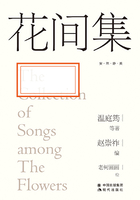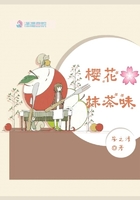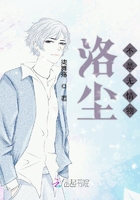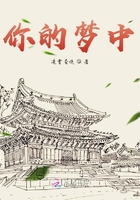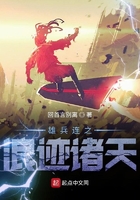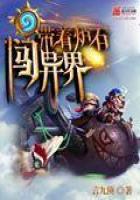Another function of “objective correlative” is to make a gap between reader and poetry. Romantic poetry before Eliot bears the characteristic that the reader can trace the source of the poem in the poet. This is one reason for many romantic poetry being sentimental but superfluous. Accompanied with “objective correlative”, Eliot proposed another important point of view which has become a distinctive characteristic of modern poetry:
…poets in our civilization, as it exists at present, must be difficult. Our civilization comprehends great variety and complexity, and this variety and complexity, playing upon a refined sensibility, must produce various and complex results. The poet must become more and more comprehensive, more allusive, more indirect, in order to force, to dislocate if necessary, language into his meaning. T. S. Eliot, Selected Essays, London: Faber and Faber Limited, 1975, p289.
In summary, for Eliot, great poetry is the product of tradition, in which personal feelings dissolve and only the most common things are kept for which the best medium is objective correlatives. Having a review on Eliot’s major principles, we can conclude that The Waste Land is not only the peak of modernist poetry but also a perfect practice of Eliot’s literary ideas.
Image Analysis of the First Part of The Waste Land
In the presentation speech, Anders Osterling devoted a special paragraph to The Waste Land:
The Waste Land-a title whose terrifying import no one can help feeling, when the difficult and masterly word-pattern has finally yielded up its secrets. The melancholy and somber rhapsody aims at describing the aridity and impotence of modern civilization, in a series of sometimes realistic and sometimes mythological episodes, whose perspectives impinge on each other with an indescribable total effect…. Its catastrophic visions still have undiminished actuality in the shadow of the atomic age.http://www.*****.com/?literature/laureates/1948/press.heml
This speech discloses the theme of The Waste land as well as its stylistic features. It is a “rhapsody” composed with different images. When we read it, we feel like that we are appreciating a film instead of reading a poem. The poem itself moves from one image to another and the reader receive the shock and impingement from these images. Eliot himself said nothing about any image, but all the images together speak clearly to the reader a sad story about western civilization. In this part I will choose some images from the first chapter of the poem “The Burial of the Dead” to expatiate my argument that we can access to The Waste Land by means of the poet’s creation rationale. I choose this chapter because it “presents a world of evasion, turgid in forgetful snow, where our normal expectations are reversed”.Ronald Tamplin, A Preface to T. S. Eliot, Beijing: Peking University Press, 2005, p149. In the waste land the greatest agony is that people are filled with apprehension to death, while feeling bored of living. This agony is expressed most directly in this section because at the time of resurrection of the year, people are surrounded by sterility and can see the spring only in memory. From the start of the journey, we can foresee the process and its end.
Before entering into “The Burial of the Dead”, we’d better have an examination of Sibyl—the first image of the waste land in the epigraph. She is the key to open the gate of the mysterious castle of the waste land. The figure of Sybil derives from the Greek myth. She had the prophetic power who divulged the future to the people. But now she is no longer consulted by heroes but tormented by curious boys. She still has to answer because she must. In her prime of life Sibyl exposed her prediction by writing them on green leaves in the words people couldn’t wholly understand. But now she has only sands in her hands, which symbolizes that in the future people will live in the waste desert with no green trees, the symbol of life. And it is obvious that desert and water form the strongest binary opposition in the poem. We notice that the epigraph is written in Latin. Hence Eliot located her actually in the connection to the Greek and Roman beginnings of European civilization, once flourishing, now vanished. This is also a hint that we must stand against the whole western civilization to grasp the essence of The Waste Land.
As the first image we encounter in the travel to the waste land, Sybil has turned into a symbol of “the mind of Europe”, “a mind more important than one’s own private mind, a mind which changes but abandons nothing en route, not superannuating either Shakespeare, or Homer, or the drawing of the Magdalenian draughtsmen;” T. S. Eliot, Selected Essays, London: Faber and Faber Limited, 1975, p16. but now very nearly exhausted by the effort to stay interested in its own contents. So when the boys cried to her, “Sibyl, what do you want?” she answered, “I want to die.” The image of Sibyl sets the desolate tone for the whole poem and has the dispiriting atmosphere seeps and pervades in the mind of the reader at the starting point of the travel.
The second image I will illustrate is April. “The Burial of the Dead” famously begins with a desire for stasis and anxiety about the change, growth, and sexuality by April and the spring rain. It reminds us of Chaucer’s April in Canterbury Tales. In Chaucer’s eyes,
When that Aprille with his showers soote
The droughte of March hath perced to the roote
And bathed every veine in swich licour
Of which vertu engendred is the flowr
Thanne longen folk to goon on pilgrimages… M. H. Abrams (General Editor), The Norton Anthology of English Literature (Fourth Edition), New York: W. W. Norton & Company, 1979, p100.
From Chaucer on, April has become a charming and energetic season: every thing is fresh, sweet and promising. The world is overflowing with vigor and we can perceive spring in the air. People go on their pilgrimages to pursue the purification of their souls. But in April on the waste land, people’s desire and anxiety merely bring “a little life with dried tubes” to us. This can be sensed from the slow, repetitive syntax and hanging participles—“breeding”, “mixing”, “covering” and “feeding”.

